Microglia-derived macrophage colony stimulating factor promotes generation of proinflammatory cytokines by astrocytes in the periventricular white matter in the hypoxic neonatal brain
- PMID: 20406232
- PMCID: PMC8094857
- DOI: 10.1111/j.1750-3639.2010.00387.x
Microglia-derived macrophage colony stimulating factor promotes generation of proinflammatory cytokines by astrocytes in the periventricular white matter in the hypoxic neonatal brain
Abstract
Inflammation in the periventricular white matter (PWM) of hypoxic neonatal brain causes myelination disturbances. In this connection, macrophage colony-stimulating factor (M-CSF) has been reported to regulate release of proinflammatory cytokines that may be linked to PWM damage. We sought to determine if M-CSF derived from amoeboid microglial cells (AMC) would promote proinflammatory cytokine production by astrocytes in the PWM following hypoxic exposure, and, if so, whether it is associated with axon degeneration and myelination disturbances. In 1-day hypoxic rats, expression of M-CSF was upregulated in AMC. This was coupled with increased expression of CSF-1 receptor, tumor necrosis factor-alpha (TNF-alpha) and interleukin-1beta (IL-1beta) in astrocytes, and TNF-receptor 1 and IL-receptor 1 on the axons. Neurofilament-200 immunopositive axons and myelin basic protein immunopositive processes appeared to undergo disruption in 14-days hypoxic rats. By electron microscopy, some axons showed degenerative changes affecting the microtubules and myelin sheath. Primary cultured microglial cells subjected to hypoxia showed enhanced release of M-CSF. Remarkably, primary cultured astrocytes treated with conditioned-medium derived from hypoxic microglia or M-CSF exhibited increased production of TNF-alpha and IL-1beta. Our results suggest that AMC-derived M-CSF promotes astrocytes to generate proinflammatory cytokines, which may be involved in axonal damage following a hypoxic insult.
Figures
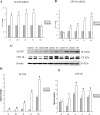
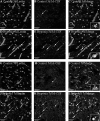

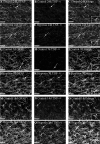
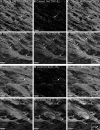
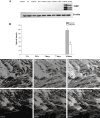
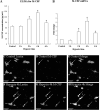
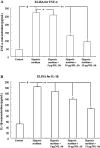
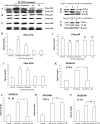
Similar articles
-
Amoeboid microglia in the periventricular white matter induce oligodendrocyte damage through expression of proinflammatory cytokines via MAP kinase signaling pathway in hypoxic neonatal rats.Brain Pathol. 2008 Jul;18(3):387-400. doi: 10.1111/j.1750-3639.2008.00138.x. Epub 2008 Mar 26. Brain Pathol. 2008. PMID: 18371179 Free PMC article.
-
Astrocyte-derived proinflammatory cytokines induce hypomyelination in the periventricular white matter in the hypoxic neonatal brain.PLoS One. 2014 Jan 31;9(1):e87420. doi: 10.1371/journal.pone.0087420. eCollection 2014. PLoS One. 2014. PMID: 24498101 Free PMC article.
-
Iron and iron regulatory proteins in amoeboid microglial cells are linked to oligodendrocyte death in hypoxic neonatal rat periventricular white matter through production of proinflammatory cytokines and reactive oxygen/nitrogen species.J Neurosci. 2011 Dec 7;31(49):17982-95. doi: 10.1523/JNEUROSCI.2250-11.2011. J Neurosci. 2011. PMID: 22159112 Free PMC article.
-
Roles of activated microglia in hypoxia induced neuroinflammation in the developing brain and the retina.J Neuroimmune Pharmacol. 2013 Mar;8(1):66-78. doi: 10.1007/s11481-012-9347-2. Epub 2012 Feb 26. J Neuroimmune Pharmacol. 2013. PMID: 22367679 Review.
-
Periventricular white matter damage in the hypoxic neonatal brain: role of microglial cells.Prog Neurobiol. 2009 Apr;87(4):264-80. doi: 10.1016/j.pneurobio.2009.01.003. Epub 2009 Jan 24. Prog Neurobiol. 2009. PMID: 19428957 Review.
Cited by
-
Potential biomarkers for neuroinflammation and neurodegeneration at short and long term after neonatal hypoxic-ischemic insult in rat.J Neuroinflammation. 2019 Oct 28;16(1):194. doi: 10.1186/s12974-019-1595-0. J Neuroinflammation. 2019. PMID: 31660990 Free PMC article.
-
CSF levels of myelin basic protein in pediatric patients with ventriculoperitoneal shunt infection.Cent Eur J Immunol. 2020;45(1):48-55. doi: 10.5114/ceji.2020.94682. Cent Eur J Immunol. 2020. PMID: 32425679 Free PMC article.
-
Metabolic and Inflammatory Adaptation of Reactive Astrocytes: Role of PPARs.Mol Neurobiol. 2017 May;54(4):2518-2538. doi: 10.1007/s12035-016-9833-2. Epub 2016 Mar 17. Mol Neurobiol. 2017. PMID: 26984740 Review.
-
Scutellarin regulates microglia-mediated TNC1 astrocytic reaction and astrogliosis in cerebral ischemia in the adult rats.BMC Neurosci. 2015 Nov 25;16:84. doi: 10.1186/s12868-015-0219-6. BMC Neurosci. 2015. PMID: 26608466 Free PMC article.
-
Metabolic Regulation of Glial Phenotypes: Implications in Neuron-Glia Interactions and Neurological Disorders.Front Cell Neurosci. 2020 Feb 11;14:20. doi: 10.3389/fncel.2020.00020. eCollection 2020. Front Cell Neurosci. 2020. PMID: 32116564 Free PMC article. Review.
References
-
- Barres BA, Raff MC (1993) Proliferation of oligodendrocyte precursor cells depends on electrical activity in axons. Nature 361:258–260. - PubMed
-
- Billiards SS, Haynes RL, Folkerth RD, Trachtenberg FL, Liu LG, Volpe JJ, Kinney HC (2006) Development of microglia in the cerebral white matter of the human fetus and infant. J Comp Neurol 497:199–208. - PubMed
-
- Bradford MM (1976) A rapid and sensitive method for the quantitation of microgram quantities of protein utilizing the principle of protein‐dye binding. Anal Biochem 72:248–254. - PubMed
-
- Cecchini MG, Dominguez MG, Mocci S, Wetterwald A, Felix R, Fleisch H et al (1994) Role of colony stimulating factor‐1 in the establishment and regulation of tissue macrophages during postnatal development of the mouse. Development 120:1357–1372. - PubMed
-
- Chew LJ, Takanohashi A, Bell M (2006) Microglia and inflammation: impact on developmental brain injuries. Ment Retard Dev Disabil Res Rev 12:105–112. - PubMed
Publication types
MeSH terms
Substances
LinkOut - more resources
Full Text Sources
Research Materials
Miscellaneous

